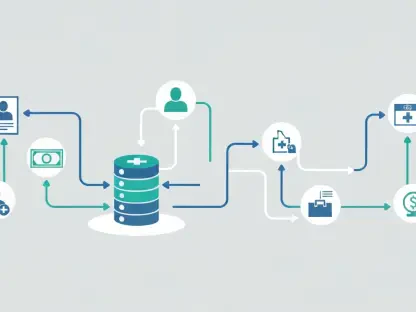The landscape of software development is perpetually evolving, with a constant influx of new technologies and tools designed to streamline the process. However, the debate between utilizing timeless testing tools versus adopting newer ones remains a central topic among developers and quality assurance (QA) professionals. This article explores the value of both tried-and-true tools and modern innovations, offering a balanced perspective on how to effectively integrate them into your software development lifecycle.
The Importance of Timeless Testing Tools
Proven Reliability and Stability
Timeless testing tools have stood the test of time for a reason—they are reliable, stable, and well-documented. Because these tools have been in use for decades, they come with a plethora of resources, from troubleshooting guides to user forums. This extensive support network can be incredibly beneficial for both novice and experienced developers. Additionally, these tools often have well-defined limitations and known issues. This predictability allows teams to navigate challenges more effectively, reducing the risk of unexpected problems that can arise with newer, less understood tools.
Moreover, the proven reliability of timeless tools is backed by numerous case studies, user testimonials, and a broad base of real-world applications. The longevity of these tools means they have been refined over time, offering a solid foundation that minimizes the potential for critical failures during important phases of development. This stability is particularly crucial for industries where software reliability directly impacts safety, financial outcomes, or user experience. Consequently, the resilience these tools offer makes them indispensable for many long-term projects requiring steady performance.
Cost-Effectiveness and Training Efficiency
Another significant advantage of established tools is their cost-effectiveness. Newer tools often require significant investment in terms of both money and time. Teams must spend valuable resources on training and may face a steeper learning curve. In contrast, timeless tools are generally quicker to deploy and easier to integrate into existing workflows, minimizing disruption and enhancing productivity. The lower cost of ownership is particularly beneficial for smaller teams or startups that need to keep expenses under control while still maintaining high standards of quality.
Furthermore, familiarity with these tools can lead to quicker problem-solving and reduced downtime. Teams that already know how to use these tools can focus more on the task at hand rather than learning new systems, thereby increasing overall efficiency. The speed at which teams can get up to speed with timeless tools ensures that projects stay on track, deadlines are met, and budgets are adhered to. Ultimately, this leads to a more efficient use of both human and financial resources, enhancing the overall efficacy of the software development lifecycle.
Bias Toward New Tools
The Allure of Innovation
It’s natural for developers to be drawn to the latest technologies. The buzz around new tools often creates a sense of urgency to adopt them immediately, driven by fears of being left behind. This phenomenon is sometimes known as the “sunk cost fallacy,” where the investment in new tools feels necessary to justify the time and money already spent on them. Developers are often eager to embrace what they perceive as cutting-edge solutions, believing these will offer significant improvements over existing methods.
While innovation is essential for growth, it’s crucial to approach new tools with cautious optimism. Developers should evaluate the genuine benefits these tools offer and weigh them against potential risks and costs. The allure of being early adopters can sometimes cloud judgment, leading to hasty decisions that may not align with the actual needs of a project. Therefore, a measured approach that includes comprehensive research and a clear understanding of the tool’s practical applications is necessary to avoid costly mistakes.
Potential Pitfalls and Hidden Costs
New tools may promise groundbreaking features, but they often come with hidden costs. These could be limitations that aren’t evident during initial evaluations but become apparent in a production environment. There may also be unforeseen compatibility issues with existing systems, requiring additional time and resources to resolve. The lack of mature support ecosystems for new tools can further exacerbate these problems, making it challenging to find expert advice or community support when issues arise.
Moreover, these hidden costs are not just financial but can also affect team morale and productivity. The frustration of dealing with unexpected problems can lead to a loss of confidence in the tool and result in wasted hours trying to troubleshoot issues. Developers may also become disillusioned with the promises of new tools, leading to a more skeptical and resistant attitude toward future innovations. Therefore, while the initial appeal of new tools can be strong, it’s essential to conduct thorough evaluations to fully understand the long-term implications of adopting them.
Comprehensive Evaluation Approach
Understanding the Problem
Before selecting any tool, it’s crucial to have a thorough understanding of the problem you’re trying to solve. Jumping into new solutions without this foundational knowledge can lead to suboptimal outcomes. Understanding your project’s specific requirements and constraints will guide you in choosing the most effective tools. This approach ensures that the tool selected is not just a trendy choice but one that genuinely addresses the core issues of the project.
For instance, if you’re working on a project involving API tests, you’ll need to evaluate tools based on their ability to handle your specific use case. Take the time to conduct a needs analysis, considering factors like budget, existing infrastructure, and team expertise. A focused, problem-centric approach can reveal which tools are best suited for the task, ensuring that they integrate seamlessly into your development process and deliver the expected results.
Proof-of-Concepts and Rigorous Testing
Implementing multiple proof-of-concepts (PoCs) with different tools can be an effective strategy. This approach allows you to rigorously test each tool’s capabilities and limitations in a controlled environment. For example, in a real-world scenario, the Karate framework was chosen for API tests after extensive PoCs, despite initial biases against it. The PoC phase provides invaluable insights into how a tool performs under various conditions, helping to identify potential issues before full-scale implementation.
Rigorous testing ensures that the tool you select will perform reliably under real-world conditions. This stage of evaluation is critical to avoid pitfalls and ensure that the tool integrates seamlessly into your workflow. Comprehensive testing should cover not just functionality but also aspects like ease of use, compatibility with existing systems, and the quality of available support resources. By thoroughly vetting tools through PoCs and real-world scenarios, you can make informed decisions that align with your project’s needs and long-term goals.
Balancing Old and New Tools
Embracing Innovation with Caution
While established tools offer reliability and ease of use, new tools can provide innovative solutions that drive efficiency and performance. Striking a balance between the two is essential for maintaining a competitive edge in software development. It’s important to remain open to new technologies while being cautious about their application. A balanced approach ensures that your toolkit remains robust, incorporating proven methods alongside cutting-edge innovations.
When considering new tools, it’s vital to validate their efficacy against established metrics and benchmarks. This process helps ensure that the new tools offer tangible benefits without succumbing to industry hype or superficial appeal. By applying rigorous criteria to evaluate new tools, you can filter out those that do not meet your high standards, ensuring that only the most effective and reliable tools become part of your development process.
Practical Integration Strategies
One practical approach is to gradually integrate new tools into your workflow, starting with non-critical components. This allows teams to familiarize themselves with the new technology and identify any potential issues before full-scale implementation. By adopting a phased approach, you can minimize disruption and better manage the transition between old and new tools. This method also provides the opportunity to gather feedback and make necessary adjustments, ensuring a smoother integration process.
Regularly reviewing and updating your toolkit ensures that you benefit from the latest advancements while maintaining the stability provided by timeless tools. This balanced approach fosters a more resilient and adaptable development environment. By keeping an eye on emerging technologies and selectively incorporating them into your workflow, you can maintain a competitive edge while avoiding the pitfalls associated with premature adoption.
Exploring the Role of AI in Software Testing
Benefits of AI Tools
Artificial intelligence is increasingly making its mark in software development and testing. Tools like GitHub Copilot, Google Gemini, and ChatGPT can significantly enhance productivity by automating repetitive tasks and providing intelligent suggestions. These AI tools can assist in code generation, bug detection, and even in writing test cases, thereby saving developers a considerable amount of time and effort. AI’s ability to analyze vast amounts of data quickly and accurately makes it a valuable asset in the development process.
Moreover, AI tools can facilitate better decision-making by providing insights based on data patterns and historical information. For example, AI can predict potential areas of code that are prone to bugs based on past occurrences, allowing developers to focus their testing efforts more effectively. The predictive capabilities of AI can also help in resource allocation, ensuring that time and effort are spent on the most critical areas of a project. As a result, the integration of AI can lead to more efficient and effective software development and testing processes.
Challenges of AI Integration
The realm of software development is in a constant state of flux, with a steady stream of new technologies and tools emerging to enhance efficiency. Among developers and quality assurance (QA) professionals, a key discussion revolves around whether to stick with time-tested testing tools or embrace the latest innovations. This debate underscores the importance of understanding the strengths and limitations of both approaches.
Traditional testing tools have stood the test of time, proving their reliability and effectiveness across various projects. These tools are well-documented, have a community of experienced users, and come with a wealth of industry knowledge. They offer stability and predictability, which are crucial for long-term projects and environments where consistency is paramount.
On the other hand, modern testing tools bring innovative features and advanced capabilities that cater to the ever-changing needs of contemporary software development. They often integrate seamlessly with newer development methodologies, such as Agile and DevOps, providing faster feedback and more flexibility. These tools tend to be more user-friendly and can significantly reduce the learning curve for new team members.
Balancing these options requires a nuanced strategy. Using a mix of both tried-and-true and modern tools can provide a comprehensive testing framework. This hybrid approach maximizes the benefits of established reliability while leveraging cutting-edge advancements to keep pace with evolving industry standards. By thoughtfully integrating both types of tools into your software development lifecycle, you can ensure robust, efficient, and forward-thinking outcomes.









